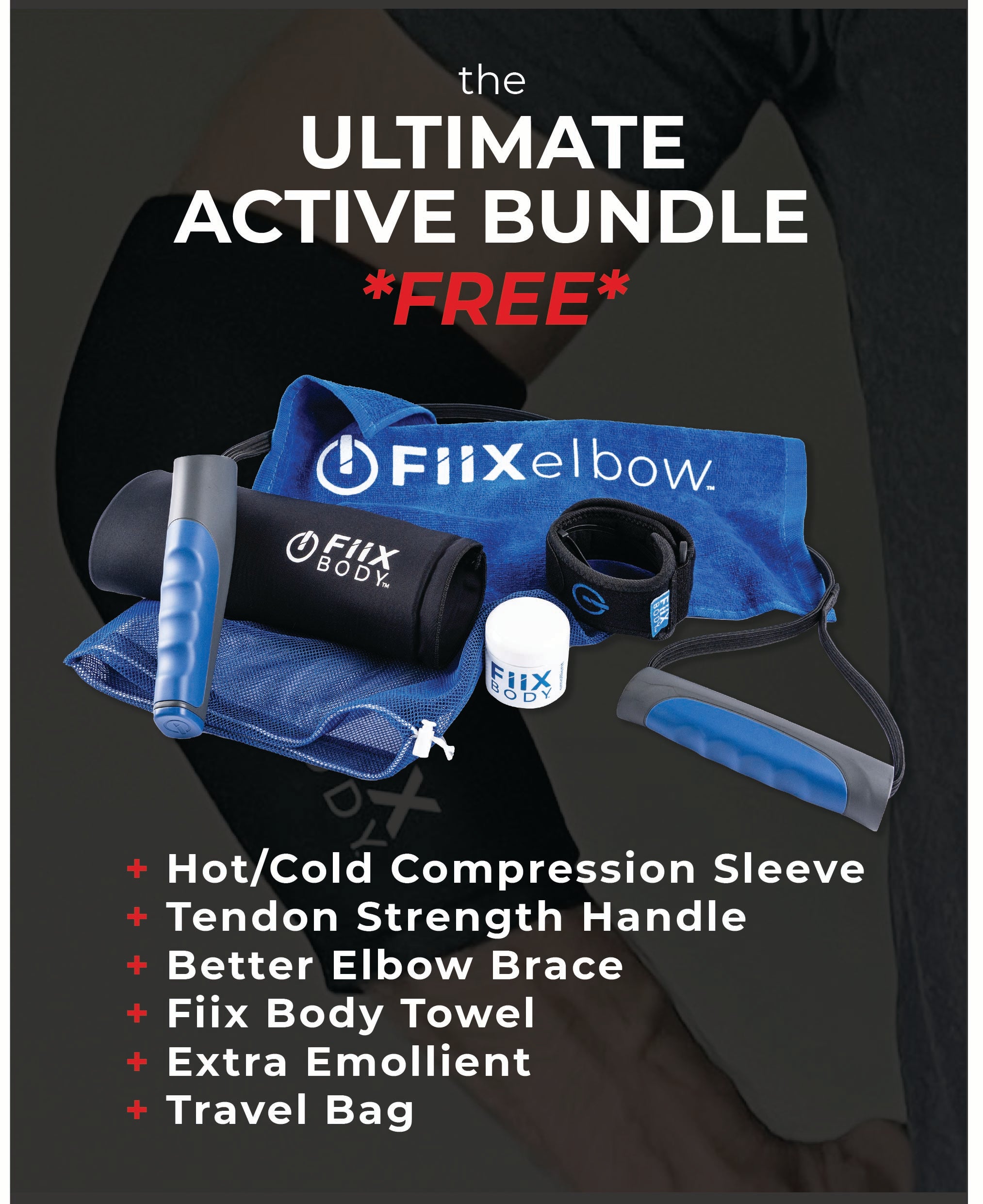Regardless of tennis elbow, most of us in the United States already struggle to get enough sleep in our 24/7/365 connected society. Experts recommend that adults get seven to nine hours of rest each night, but at least one-third of them fall short. Sleep deprivation over time can lead to exhaustion, inability to concentrate, irritability, in addition to diseases such as obesity, diabetes and hypertension.
On its own, tennis elbow when you’re awake can be challenging to manage. But when this common condition starts interfering with sleep as well, it adds another incremental level of discomfort.
Tennis Elbow Causes and Symptoms
If you’re reading this blog, chances are that you have tennis elbow, or someone you know is among the approximately 10 million people in the U.S. who suffer from it each year. Whether it was caused by tennis, gaming, biking, exercising, crafting or other activities, the effects on the arm are the same.This overuse injury happens due to repetitive movements of the muscles and tendons in the forearm and arm, which cause microscopic tears. These tears result in irritation, inflammation, pain and degeneration of the tendon over time. Symptoms include:
- Dull ache
- Sharp pain when using the forearm and wrist
- Stiffness or soreness at the elbow
- Weak grip strength
- Difficulty lifting items
- Numbness in the fingers
You can experience these symptoms not only when playing tennis, or using a computer mouse, or lifting weights, but also when carrying a briefcase, turning a doorknob, shaking hands or bumping elbows. And many tennis elbow sufferers find that the pain keeps them up at night or interrupts their sleep. Learn how to relieve tennis elbow pain at night here.
Why Does My Elbow Hurt when Sleeping?
Because the tendon already has been injured due to repetitive motion, the degeneration is ongoing and doesn’t necessarily require movement to feel irritated. It just hurts, unfortunately.
Plus, because tendons have reduced blood supply and poor circulation, they heal very slowly on their own without treatment. Furthermore, muscles and connective tissues can become tight and somewhat stiff while sleeping due to lack of movement and lower circulation during a resting state, especially as we get older.
In addition, your arm and body positions when you sleep can add strain and exacerbate pain. Sleeping on the affected arm, extending your arms overhead or rolling onto, or twisting, your forearm can further aggravate the injured area.
How to Fall and Stay Asleep with Tennis Elbow
Since interrupted or lack of sleep brings a host of other issues that negatively impact daily life, obviously it’s important to find ways to rest when dealing with this nagging condition. You may have to try a few options to see what works best for you. If nothing is effective, of course, talk to your doctor.- Use heat before going to sleep. Help stimulate circulation and relaxation by heating the elbow before bed with a warm bath, hot compress, heating pad or topical cream such as Bengay or Icy Hot.
- Wear a loose-fitting sleeve over the elbow. Skip tight braces and compression sleeves that restrict circulation, and opt for a light neoprene version or even socks that have the toe area cut out. Loose support conserves heat and can help stabilize the forearm to reduce pressure on the injured tendon and muscles.
- Use a pillow to support the elbow. Adding external support with a pillow under your arm also helps decrease stress on the area.
- Sleep on your back or unaffected side. This seems like an obvious one, but it can be a challenge if you’re a side or stomach sleeper. Falling asleep in a different position can be difficult, and, furthermore, once asleep, you’re likely to move around, and all bets are off then.
Treating Tennis Elbow
The best way to address sleep troubles due to tennis elbow is to eliminate the pain by effectively treating the injury. A new treatment from Stā Active, the Fiix Elbow, is an FDA-registered medical device that directly targets the cause of the pain to repair the tissue.The Fiix Elbow automates a proven clinical procedure called instrument-assisted soft tissue mobilization (IASTM), which delivers repetitive strokes to the forearm tendon to break up scar tissue and adhesions, increase oxygenation and blood flow and stimulate collagen synthesis to promote healing.
Tennis elbow sufferers simply wear the unit for 10 minutes per day, three times per week for eight weeks, while also performing specific simple exercises. This protocol has been shown to result in significantly less pain overall, a healthier tendon, increased strength in the forearm muscles and greater ability to use the forearm and hands without pain.
And all that means better sleep as well!



Share:
What Upper-Body Exercises Can I Do with Tennis Elbow?
How Much Does Tennis Elbow Treatment Cost?